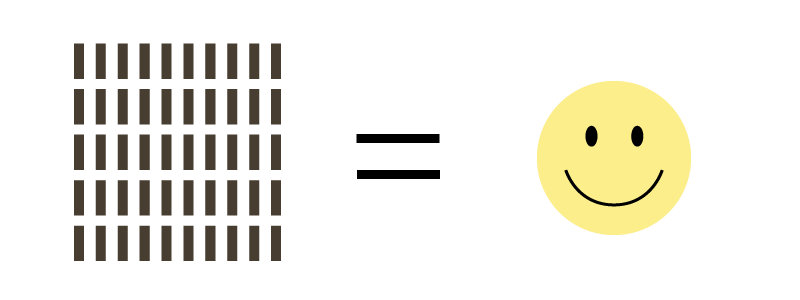In 2012, a good deal of popular attention greeted a book, translated from the Japanese, entitled The Life-Changing Magic of Tidying Up: The Japanese Art of Decluttering and Organizing. The book was, as its title announced, about decluttering and organizing the home, but it overlaid these mundane chores with a missionary zeal that somehow spoke to a substantial audience of millennials and their mothers. The book’s popularity was such that it spurred a second book, Spark of Joy: An Illustrated Master Class on the Art of Organizing and Tidying Up. The author of both, Marie Kondo, had by now become a celebrity, and her principles for decluttering and organizing had been branded with a formal name: the KonMari method.
As with all products and services that penetrate the fickle consciousness of the consumer, the next step was to extend the merchandise into a new arena. Kondo’s lessons have, accordingly, been adapted for television in the form of a Netflix series, Tidying Up with Marie Kondo. The producers understood that the appeal of the books could be amplified by the physical presence of their author, a diminutive figure who looks like she has been neatly folded for maximum efficiency, much the way she teaches her clients to fold their clothes.
At the beginning of each show, Kondo, who understands English but doesn’t speak it, appears in the doorway of a messy home accompanied by a somewhat more robust version of herself who acts as translator. The visitation is met with hugs all around.
One will argue that the subject-matter here is hardly new. It is the extension of a long-standing fight against entropy that has preoccupied humans since the beginning of Western civilization. Some may remember learning about the Great Chain of Being in their Intro to Shakespeare course in college: order is at the top of the chain and chaos at the bottom — one is symbolic of the divine; the other, of the Satanic.
Capitalism, by definition, involves a drive for order in the means of production. Taylorism, the first methodical effort to institute division of labor, is a kind of KonMari Method applied to the factory. As the industrial economy gave way to an information and service-based one, the drive for order grew more abstract and complicated, with the result that business schools emerged and books written outlining elaborate methods to impose order in different domains: management, strategic planning, efficiency, quality control, risk, and so forth.
While orderliness in the workplace has been associated with men, orderliness in the home has been associated with women. This dates back to the primitive division of labor: male, hunter-gatherer and female, keeper of the hearth. In a land-based economy, this division remained intact: domestic chores were performed by women; the tending of crops and livestock, by men. European, aristocratic women, who didn’t get their hands dirty, were nonetheless expected to oversee household order — making sure meals were cooked properly and served on time; furniture dusted; linen washed, ironed, and folded; and so forth — while their husbands oversaw the running of the estate.
As Western society became industrialized and ostensibly more democratic, the separate spheres ideology doubled down, at least among the middle classes. Just as management theory emerged for business, home economics emerged for the home. But as the workplace expanded and grew more complex the home, one might argue, grew simpler, as technology became available to ease many traditional functions. This made it necessary to create tasks that might have gone by the wayside before or to elaborate on those that might have once been perfunctory or negligible. But by the 1960s, the sense that housekeeping was a calling for women had begun to show strain. Delight at sparkling kitchen counters through visitations by Mr. Clean and satisfaction at soft toilet paper courtesy of Mr. Whipple brought home the fact that women were performing roles assigned to them under patriarchy. In being as cartoonish as they were, ads like these made both the tasks and the authorities who dictated them seem foolish.
Unsurprisingly, housekeeping became one of the targets of second-wave feminism. Why did one have to have a perfectly kept home? Who cared if there was a sprinkling of dust on the furniture, an unmade bed, a pile of dishes in the sink? Dating from the late 1970s, orderly living spaces began to seem trivial in the face of larger revolutionary goals or more challenging work outside the home.
But we now see a return of the domestic. This has happened on a variety of fronts. Kondo’s popularity parallels a general interest in home-related self-help that is currently central to our economy. A myriad of closet consultants and stores have sprouted across the country that have made this room, once ignored, an important feature for realtors (take note of how often HGTV home-buyers comment excitedly about a walk-in closet or despondently about its absence). The Container Store is a thriving chain devoted entirely to organizing stuff — a postmodern enterprise if there ever was one in its focus on form rather than content, and enacting, in the most concrete terms possible, Marshall McLuhan’s edict that “the medium is the message.” Nor is Kondo’s Tidying Up the only series on TV that addresses disorder. There are several that deal with the problem, especially among people with a tendency to hoard. These shows resemble the equally popular personal makeover shows. In both cases, order is created out of disorder. In the case of a human body, this can mean shortening a too-long nose or taming flyaway hair or a lumpy profile.
But while Marie Kondo’s series overlaps with other shows, it also seems different in that it markets a mindset as much as an end result. Its Japanese origins and the ritualistic way in which Kondo operates (touching objects and garments reverently, and folding and storing them according to prescribed patterns) link it to spiritual ideas associated with Zen.
But one can also argue that the spiritual aspect of the show is in service to something else. For if the KonMari method is overtly about tidying up, it is covertly about acquisition. Behind the Zen trappings lurks a clamorous consumer culture. Kondo’s method is not just about sorting and organizing things, it is also about discarding them, and thus making room for new ones. Other shows do this, of course, but they do this in the context of need, obsolescence, or style (e.g. replacing that unreliable printer, throwing out those old jeans, discarding that dowdy pullover). Kondo’s method gets rid of things on an entirely different basis: on whether or not the item “sparks joy.” This allows consumers to discard what they have acquired, almost simultaneously with acquiring them — after all, what sparks joy today may not spark joy tomorrow — and to make the sifting and sorting of things into the correlative of continually acquiring them. The ritual of holding and thanking the item before eliminating it, which is a special part of the KonMari method, is a brilliant maneuver by which guilt at wastefulness or profligacy can be eliminated.
The process conforms, moreover, with the pattern familiar to us from religious observance. Most every religion is based on a dualism of sin and repentance; the KonMari Method’s dualism turns on acquisition and decluttering. Indeed, the terminology that Kondo has coined evokes traditional Christian ideas of salvation. She promises, through her Method, a structural renovation of life as we have lived it before (“life-changing magic”), alongside revelatory epiphanies (“sparks of joy”).
Significantly, this is represented as a communal experience. When Kondo visits she commandeers everyone, including the children of the household, into the rites of emptying, discarding, folding, and storing. The family emerges refreshed and purified, ready, one might argue, to take a trip to the mall to acquire more stuff that will need to be evaluated for sparks of joy.
And yet, for all its communal aspects, the KonMari Method is a paean to domesticity aimed at women. I say this not ignoring the fact that there are men for whom neatness and organization are important, even central, to the way they lead their lives. And not ignoring the fact that the show concentrates on showing both men and women engaged in the KonMari Method.
But for all its apparent openness to diversity and gender neutrality, Marie Kondo’s appeal to women, in particular, is undeniable. Her appearance is exaggeratedly feminine: a diminutive figure, a crisply ironed outfit of skirt and blouse, a set of schoolgirl bangs, and a chirpy, but confident, voice. She combines fashion magazine thinness with childlike cuteness and unintimidating efficiency and know how — an irresistible combination for those of us who have grown up with the mixed messages of consumer culture, of fashion magazines and “how-to-succeed-in-business” manuals. In short, this may be the most ingenious effort yet to contain female disruptive energy within the confines of the home and to turn folding shirts and arranging glassware into a source of profound gratification. Marie Kondo is Mr. Clean in a new container.
But I am perhaps being too second-wave feminist here and ought to take a wider perspective on this phenomenon. Might the return to the domestic be the result of deep disillusionment with the outside world whose rewards have not been as fulfilling as we women thought they would be? Might we have short-changed the kinds of gratification that tending the home can give? We made fun of Mr. Clean and Mr. Whipple, but under the aegis of Marie Kondo, we learn how a well-organized drawer can function like a Zen garden. We realize that our morning coffee mug can spark joy. Who’s to say that this isn’t the most efficient way there is to achieve that much-desired state of Mindfulness that we all seek? If arranging our books alphabetically can help reduce our dosages of Zoloft or Prozac, who’s to knock it? Where so much chaos prevails in politics and so much greed in business, why not embrace the process of tidying up, especially if it can keep the economy humming? •
Graphics created by Emily Anderson.






